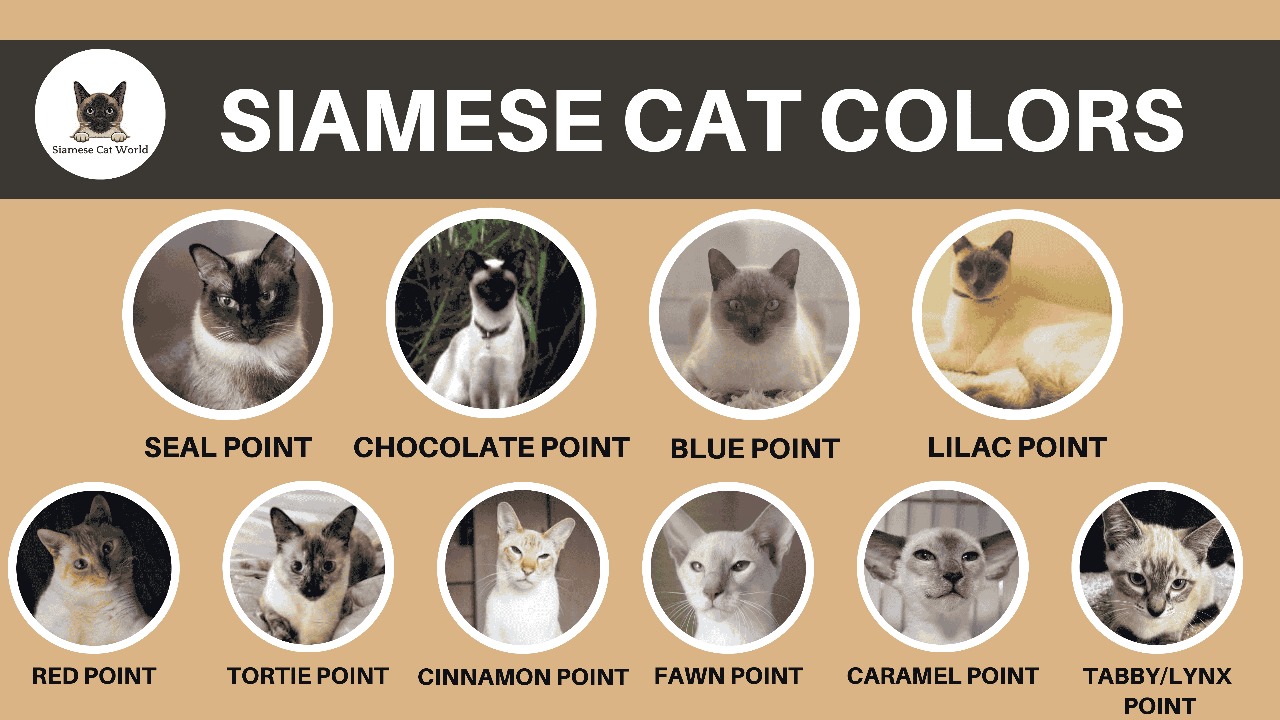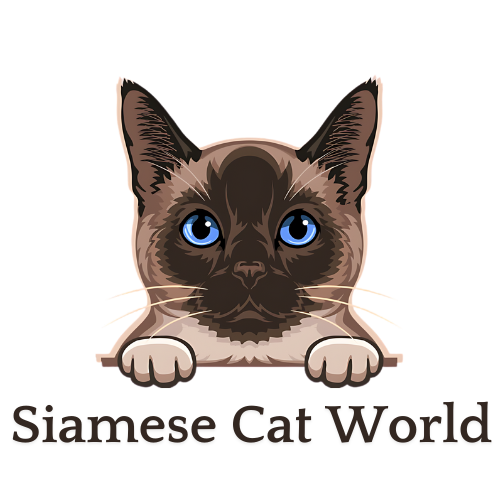
As we know the Siamese cat is known for its ancient history along with its rich heritage. The heritage of Siamese cats is as much wider than that of the world, from the South Pole to the North Pole. Siamese cats are not only divided into types by their body shapes but also by their mysterious range of colors and shades.
Today, we’ll discuss all of the Siamese cat colors from Seal Point to Lilac Point, from Cinnamon to Flame Point. At Siamese Cat World, we’re passionate about sharing the colorful spectrum of Siamese cats with you.
Common Traits of Siamese Cats:
Siamese Cats may have different body shapes and different point colors but these are some things that they have the same:
- Vivid blue eyes and pale
- Creamy Coats
They also have darker facial masks, ears, tail, nose leather, paws and paw pads. These darker areas are known as Points.
The various types of Siamese cats are identified by the color of their points. Let’s explore the diverse range of Siamese cat colors.
The Main Four Siamese Cat Colors:
These are the four purebred Siamese cat colors, each identified by their unique point shades that reflect their rich heritage and captivating appearance.
- Seal Points: They are considered as the original “Meezers” that were founded in ancient Siam. Seal Point is considered the classic Siamese cat color.
Seal-pointed Siamese cats have pale fawn/cream coats with dark-brown seal points on all prominent body parts like ears, tail, nose leather, paws and paw pads. - Chocolate Points: They have lighter-diluted brown points. Chocolate-pointed cats have ivory-white bodies, and the lighter brown points make them seem like Milk-Chocolate color.
They are also called “Choccie Points” Siamese cats. They can easily differentiated by Seal Points. - Blue Points: They have bluish points on the pure white body. The bluish tint looks as cool as the kitten’s color. They have also slate-grey shades on their ears, tails, nose leather, paws and paw pads.
Blue-pointed Siamese cats have cooler body tones than the other Siamese cats. Their bluish tint may get darker and turn into slate-grey as they grow old. - Lilac Points: They are considered the most famous breed color of Siamese cats. They have diluted chocolate points. They have pink-toned, greyish color on cold white bodies.
They are also known as “Frost Points”, in resemblance to pale-grey color. Their nose and paw pads are cinnamon-pink, which attracts its viewers. They also get darker color when they grow old.
These four Siamese cat colors are purebred and are officially recognized by all major cat associations, including the Siamese Breed Council of the Cat Fanciers’ Association (CFA) in the United States.
Wait….Here’s a twist, the Siamese cat doesn’t remain only in these 4 point colors, it also diversified its breed color to some modern and unique colors.
The Unique Siamese Cat Colors from Crossbred Origins:
The Cat Fancier’s Association also classified some other colors of the Siamese cat that have been the result of the mating of Siamese cats with American short hair or British shorthair cats. There are also some other cat breeds involved in these crossbred colors.
The following are the hybrid colors of Siamese cats:-
- Red Points: Red Points Siamese is a crossbreed of the pure Siamese cat with a Red tabby cat as a result of carrying (O) genes. This color was introduced in 1931 into the Siamese cat color.It is also known as “Flame Points”.
The Red Point Siamese Family is also divided into three related but different points e.g. Red, Cream and Apricot Points. You can read all about this type in detail on its own Red Point Siamese Cat Page. - Tortie Points: Tortie Points Siamese is a crossbreed of the pure Siamese cat with a tortoiseshell British Short Hair Cat. This color was also introduced in 1931 into the Siamese cat color.
The Tortie Point Cat is also called “Tortoiseshell Points”. They are also diversified in all the color points like Seal torties, Blue torties and many others. You can read all about this type in detail on its own Tortie Point Siamese Cat Page. - Cinnamon Points: They are a diluted variant of chocolate points. They have stunning cinnamon-colored points on an ivory body. Their leg’s color is a little lighter than all of the body. Typical pink or pale brown points are present on the nose and paw pads.
You can read all about this type in detail on its own Cinnamon Point Siamese Cat Page. - Fawn Points: They have soft pinkish-brown points. It’s a dilute of cinnamon points. They look similar to Seal, Chocolate and Blue Siamese, but their color density is lower than these.
They have also pink noses and paw pads. You can read all about this type in detail on its own Fawn Point Siamese Cat Page. - Caramel Points: They have a dark grey-brown shade on the off-white body. It looks extremely darker with a grey color nose and paw pads with a soft pinkish tone. You can read all about this type in detail on its own Caramel Point Siamese Cat Page.
- Tabby/Lynx Points: Tabby Point is the crossbreed of Seal Point Siamese with Tabby Cat. They have stripped marks on their face, nose, eyes and foreheads. Their forehead resonates with the “M” shape and their ears are thumbprint-shaped.
They are also known as “Lynx Points” in the US, and they have many types like seal lynx, blue lynx and many more. You can read details about all the types of lynx/tabby points on its own Tabby/Lynx Point Siamese Cat Page.
Conclusion:
As we wrap up our exploration of the fascinating world of Siamese cat colors, it’s clear that these beautiful types are more than just their beautiful appearances. From the classic Seal Points to the diverse variations of hybrid colors, each Siamese cat tells a story of heritage and personality that enchants cat lovers everywhere.
At Siamese Cat World, we’re passionate about celebrating the beauty and diversity of Siamese cats. We invite you to learn about this rich breed of cats which is known for its rich history.

Leave a Reply